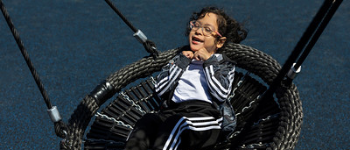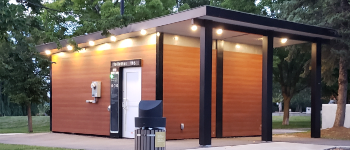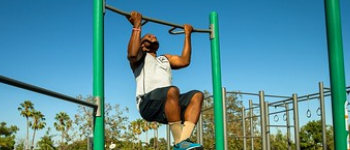Inclusivity vs. ADA Compliance in Parks and Playgrounds
Feb 09







Apr 10
Access to play is a fundamental right we believe every child deserves, not a luxury. Opportunities for active, independent play are essential for children’s development, health, emotional well-being, and social development. When we design outdoor spaces with accessibility at the forefront, we’re creating a space for these opportunities to flourish. Inclusive play environments help build stronger, more compassionate communities by making sure no one is left out – including parents, siblings, caregivers, and elders.
At MRC Recreation, we believe inclusive design is about more than ADA compliance. It's about creating joyful, equitable experiences for everyone, every day.
“Inclusive” and “accessible” are often used interchangeably, but they’re not the same. Accessibility ensures that individuals with disabilities can physically access a space, from the parking lot to the play area. Accessibility is a legal requirement, defined in the Americans with Disabilities Act (ADA). A good way to think of the ADA requirements are as the foundation, not the ceiling, for inclusion. Inclusion goes a step further—making sure everyone feels welcomed and engaged. Inclusivity encompasses accessibility and then stretches beyond it. True inclusive play combines physical access with thoughtful design that considers a wide range of physical, cognitive, sensory, and emotional needs. Universal design is the guiding principle here: Designing spaces that are usable by all people, to the greatest extent possible, without the need for adaptation.
ADA compliance requires several key elements that serve as a great foundation of accessibility to build upon. Each of these elements serve a dual purpose: function + fun!
The ADA is crucial, but it’s only the starting point, the foundation which we build upon. Real inclusion means thinking beyond – creating environments that serve a spectrum of sensory, behavioral, and developmental needs. Design features like quiet zones, guiding signage, and contrasting colors for better navigation help children with autism, ADHD, or visual impairments feel secure and empowered. Inclusion can embrace cultural quality, break down psychological and emotional barriers, and create an atmosphere of respect, awareness, independence, and learning that benefits the whole community. With our partners at PlayCore’s Center for Outreach, Research, and Education (CORE), we’re elated to provide a comprehensive guide – 7 Principles of Inclusive Design – developed in collaboration with Utah State University’s Center for Persons with Disabilities, to provide you evidence-based solutions.
Truly inclusive spaces are shaped by the people who use them. That’s why community engagement is key. Hosting listening sessions, involving local disability advocates, and inviting families to co-create the vision ensures the final design reflects lived experiences. MRC specializes in this kind of collaboration – bringing voices together to design places that feel personal, safe, and inspiring. Recently, we worked with Children and Adult Disability and Educational Services (CADES) in Delaware County, Pennsylvania to create a revolutionary inclusive playground. CADES led the way with their ambitious, clear goal, and are a testament to what’s possible when communities prioritize inclusivity.
MRC Recreation is proud to be a trusted resource for inclusive design expertise. Through our work with GameTime and our partnership with CORE, we offer evidence-based design strategies grounded in the latest research on childhood development, accessibility, and social inclusion. Whether you're planning a neighborhood pocket park or a large regional destination, we help you ensure your space is welcoming to all.
Ready to make a difference in your community? MRC Recreation is here to help you create vibrant, inclusive play areas that prioritize accessibility and connection. Whether you’re looking to renovate an existing space or start fresh with a new project, our team is ready to guide you through design, funding, and implementation. Let’s build something meaningful, together.